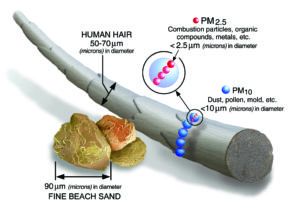An article in Science published last week indicates that the mortality risk from exposure to PM2.5 from coal-fired electric generating units is roughly twice as high as the risk posed by PM2.5 from other sources. According to the article, there were roughly 460,000 excess deaths in the United States from 1999-2020 resulting from exposure to PM2.5 from coal-fired EGUs. Prior models would have indicated roughly half that number.

I'm not qualified to opine on the technical merits of the study, but it does suggest a number of implications. First, in significant part, this is a good news story. A substantial majority of the excess mortality occurred prior to 2008; as coal-fired EGUs increasingly installed scrubbers to control sulfur dioxide emissions, excess mortality declined rapidly, by more than 85%. Given that much of the world, particularly India and China, will still be relying on coal for some time, regulators in countries still utilizing coal for energy production should insist on state-of-the-art sulfur dioxide controls.
Second, as the authors suggest, in the United States, EPA may want to consider a more refined measurement than total PM2.5 in its setting of National Ambient Air Quality Standards. NAAQS that reflect the risks posed by the specific chemical constituents of PM2.5 would seem to be in order.
Finally, I wonder whether this research might revive public nuisance litigation over PM2.5 emissions. In 2010, I rightly predicted the end of public nuisance claims aimed at emissions alleged to be causing risks at concentrations below NAAQS levels. While I cheered that result at the time, my cheering was premised on the notion that public nuisance law is a very blunt instrument, particularly compared to specific NAAQS standards that go through a thorough scientific vetting process.
I still would rather rely on EPA's process for setting NAAQS standards than judicial review under a vague public nuisance standard. However, I can imagine plaintiffs, particularly in EJ communities, bringing public nuisance claims where EPA has not addressed the risks posed by specific constituents of PM2.5 emissions. And I can also imagine judges being responsive to such claims, where the evidence indicates that the overall PM2.5 NAAQS does not adequately protect against the risks posed by specific constituents of PM2.5 emissions.
To view Foley Hoag's Law and the Environment Blog please click here
The content of this article is intended to provide a general guide to the subject matter. Specialist advice should be sought about your specific circumstances.

